This is a guest article contributed by Roman Shvidun & Marvin Espino.
Anything that differentiates your brands from others is your trademark. But how do you trademark a logo? This ultimate guide will show you how.

A trademark is a form of intellectual property that you alone have the right to use in commerce. Your logo design, slogan, and packaging are your mark of identity, and when others use them without your permission, they infringe on your trademark rights.
But how do you prevent others from copying your mark? Is it mandatory to register a trademark, or is the right assumed once the mark is used? What scope of protection do we get from registering our trademark if we choose to do so? Is it an expensive and lengthy process?
We’ll answer these questions as we go further by explaining the world of trademarks. But first of all, what is a trademark?
Related Posts:
- [Podcast] Copyright, Trademarks & Contracts Explained by Trademark Lawyer Joey Vitale
- Explained In English: Copyright, Patents, Trademarks & Registered Designs
- File for your logo trademark online
What is a Trademark?
A trademark is the unique mark of a person or a business. Anything from names, words, symbols, sounds, phrases, colors, packaging, and designs can be considered a trademark.
It has to satisfy two criteria to be considered legally binding. First, it has to be used in business. You cannot call your logo a trademark if you don’t sell any product or service related to that logo.
Second, a trademark is only effective in relation to a product or service, or in technical terms, a “class.” McDonald’s is a registered trademark for the class: food services, which means a car shop owner can get away with using the name.
The trademark law is created to prevent confusion. For example, suppose a coffee shop business adopted a similar logo to Starbucks. In that case, customers can get confused as to whether it’s the original product they used to buy or it’s an entirely different brand. But a customer won’t get confused if a soap business uses the twin-tailed mermaid design.
Therefore, while a trademark affords enough legal protection, it is only limited to the services and products it is being used.
Copyright vs. Trademark
What’s the difference between copyright and trademark?
- Copyright is made for protecting the creator’s rights
© is for copyright however it can also be written as ‘Copyright’
- Trademarks are there to prevent confusion in the marketplace. Trademarks cover business & product names, slogans and other items used to identify brands in the marketplace.
™ is for an unregistered trademark
℠ is for an unregistered service trademark
® is for an registered trademark
But the differences are not as simple as that as we explain just below.
Overwhelmed? Try a Logo Trademarking Service
If all of this trademark talk is too overwhelming, try using a lawyer or trademarking service like LegalZoom to facilitate & streamline the process.
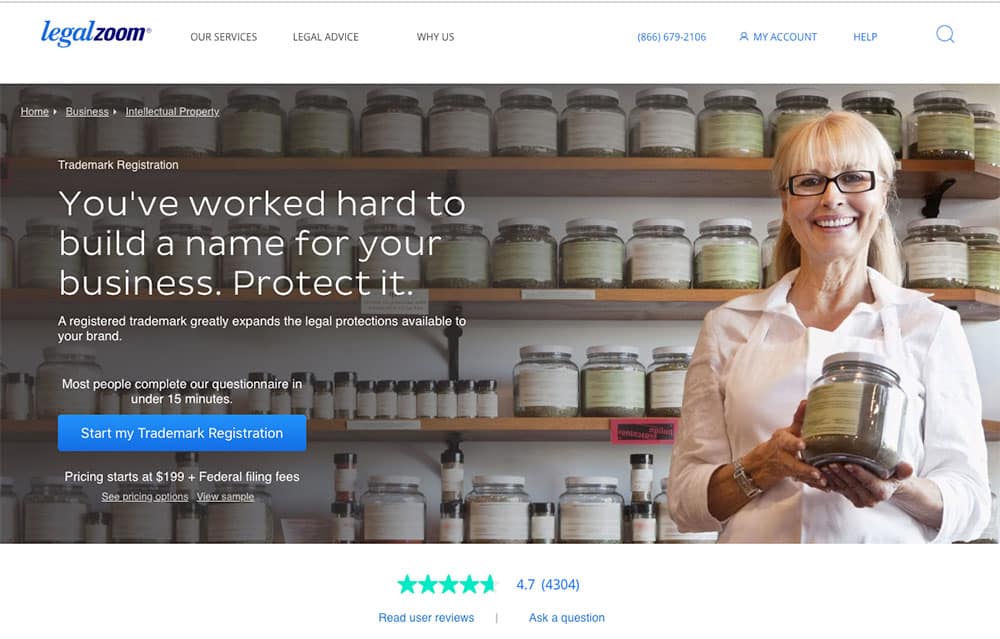
PowerBrand – Trademark Law Course to Help Protect Your Brand

Joey Vitale is a trademark lawyer we trust, in fact we interviewed Joey on our JUST Branding Podcast discussing copyright & trademark law.
Joey has put together a course named ‘Power Brand‘ that will teach you everything you need to know if you want to successfully trademark your brand by yourself.
It will teach you the foundations of trademarking, how to conduct trademark searches, how to prepare your application, how to apply and how to enforce your rights.
View all the modules of the course here over on the Power Brand course page.
Trademarking Symbols
® – Registered Trademark Symbol
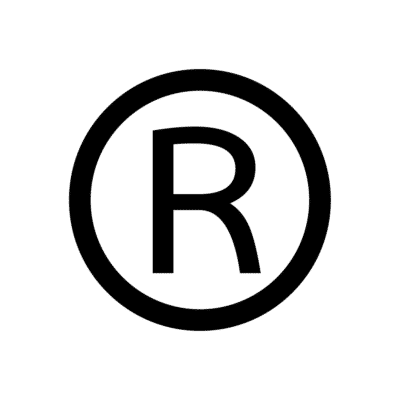
Trademarks can be registered or not depending on the scope of protection a business owner wants. So for registered trademarks, they can use this symbol beside the design. If an unregistered trademark uses this symbol, the brand violates federal laws. So for those without or with pending trademark registration, use the following symbols below.
™ – Trademark and ℠ – Services Mark

The ™ symbol refers to goods and products, hence the name trademark, while the ℠ symbol refers to services; thus, it’s called a service mark. This is to tell their competitors that the slogan, logo, and icons are their exclusive property.
Why Register A Trademark?
Once you establish your business, anything that forms part of its identity can be your trademark. e.g., slogans and your logo design. The law grants you intellectual property rights as soon as you start using the mark in commerce. This is why applying for a trademark is not generally necessary and mandatory.
However, basic or unregistered trademarks have limited rights and legal protection.
They are only valid within a specific geographical location. For example, a unique round soup packaging is protected in your area of operation, say in Malibu, California. But outside of that, any brand can copy your packaging and still get away with it legally.
That’s why should a business wish to operate outside a specific location, say state-wide, nation-wide or international, it’s generally recommended to have a trademark registered under state, federal, and country-specific laws and regulations.
Trademark Protection
In the U.S., registering your trademark is done through the USPTO (United States Patent and Trademark Office). Similar institutions offer this service in other countries.
Some of the rights granted after trademarking your brand elements include:
- Your trademark will be listed on the organization’s database, so any upcoming brands who will see your registration will avoid using a similar mark.
- Once registered, you will have verifiable legal evidence that you own the trademark and will not be required other copious amounts of evidence should there be litigation concerning your party.
- If you want to register in foreign countries, a registered trademark in state and federal records will be enough basis to get accepted (although it is still up for contention once similar-looking trademarks oppose your filing).
- You now have the right to legally sue anyone who intends to counterfeit and deceive.
- You have the right to use the circled R trademark symbol to ward off potential trademark infringement.
- You can ask customs and border patrol to not accept any products with questionable trademarks.
However, there are few exceptions regarding what trademarking can protect, such as the following.
What a Trademark Doesn’t Protect
-
Anything Generic
Trademarking is more about protecting something unique. If you think of Google, Microsoft, or Nike, their names mean nothing but are original inventions. It would be almost impossible to trademark a generic name, such as “Cozy Hotel.”
-
Compliant with the Fair Use of Doctrine
Your brand and logo can still be used by others without your permission for reasons such as teaching, commenting, or criticizing your work. Others may use your trademark as long as it doesn’t confuse your customers. These cases indeed don’t include its usage for commercial purposes.
6 Benefits of Trademarking Your Logo

While having a logo can help your brand become more recognizable, trademarking it brings several benefits to your business.
1. Granting You Authority
When you decide to register a trademark, it means that you’re serious about investing in your business.
You portray a sense of authority in your industry compared to others. It means you’re eligible by formal institutions to sell a product and provide a service your way, and no one else may act in your name lest they face legal implications.
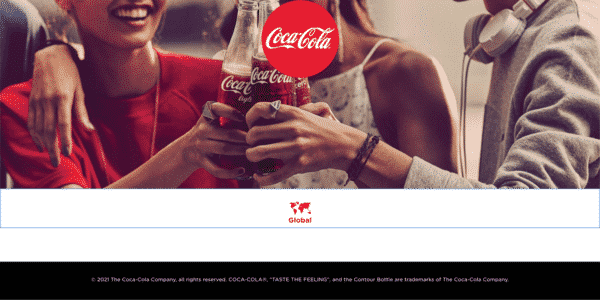
2. Legally Protecting Your Name
After registering your trademark, you’re allowed to file legal complaints to anyone using your logo and brand name without your permission and get compensated in monetary value for this infringement.
3. Legally Known in the U.S, and Beyond
By trademarking your logo in the U.S, according to UPSTO policies, you’ve opened yourself doors to apply for a trademark outside of the United States and get broader protection for your mark.
4. Stop goods importation
A trademarked logo gives you the power to stop transporting goods if they breach or violate your rights.
5. Creating Your Own Identity
As mentioned at the beginning of this article, logos give identity and make brands memorable. Business activities, partnerships, and selling becomes easier when you have a strong identity. For example, adding your logo to website popups or sending business emails personalized with your logo to customers boosts trust and conversions.
6. Trademarking Outside U.S
Expanding to international markets becomes indispensable at some point, and when you have a trademarked logo, you can protect your name even in other countries.
Trademark Protection Levels
If you want to trademark your logo, you need to consider at what level your business operates. And consequently, at what level you want to protect your brand identifier.
-
Law Trademark
Including the logo in your promotional campaigns immediately gives you law trademark protection. No need to apply for it. However, this so-called law trademark protects you for a specific geographical location, and the best way to get fully protected remains to apply for trademarking with USPTO.
Common law trademarked logos are marked with ™, for businesses dealing with products, or SM – for service-based companies. However, both offer limited protection and serve as a sign that you’re already the owner of the brand.
Trademark your logo with the USPTO for complete protection.
-
State-Level Trademark
This type of trademarking could be the right for you if you’re offering products or services in one state. It provides protection within the borders of the state you register it in, but no further.
-
Federal Trademarking
If you’re serving in numerous states, the federal trademark offers protection across state lines for your brand. Most online businesses need to apply for a federal trademark as they sell to clients within state lines.
- Anticybersquatting Consumer Protection Act ensures your domain is trademarked, so if someone causes confusion by using a similar domain, they can be sued.
- Controlling the import of goods for other businesses if they violate your trademark.
- Options for your trademark to secure international coverage.
- You’re allowed to file a lawsuit directly that goes to the federal court instead of the state court.
- You’re left with a nationally known trademark that protects your brand across states.
All the above points are brought to you by federal trademarking.
-
Trademark Opposition
For business owners interested in using their trademark for commerce or similar uses, the USPTO offers trademark opposition as an option. During this trademarking process, the USPTO creates a NOTICE OF ALLOWANCE only 12 weeks after you’ve first used the mark.
This places your trademark on the publication of new trademarks where people can file oppositions if they want. Or, they could ask to postpone the opposition time. However, if no one does, six months from the NOTICE OF ALLOWANCE, the trademark applicant has the right to:
- Utilize the mark commercially and complete a statement of use.
- Put off with six months, the process of filing a statement of use.
Types of Trademarks
1. Based on Registration
-
Standard Character Trademarks
Standard Character trademarks consist of letters, words, numbers, characters, or a combination of those without a specific design, style, font, size, and colors. In short, it protects the word itself and not how they appear.
For example, the word “Chanel” of the Paris fashion house is a standard character trademark. The law protects the word but not the design, nor its font style, color, and size. Which means that anyone can use its design anywhere.
On the other hand, some brands have both standard and special trademarks. For instance, Twitter is trademarked, and so is the blue bird logo. Under Armour is trademarked along with the UA logo.
Here are some samples of trademarked slogans: “It’s finger-lickin’ good!,” “Just do it,” “America runs on Dunkin'” — their appearance is not protected, only the words.
-
Special Form Trademarks
On the other hand, a special form trademark protects the word and the design that goes with it, such as the color combination, letter size, and style. This is the category for logos and other types of symbols and icons.
Here are some examples:

2. Based on Strength
Not all trademarks are equal in terms of strength. Some trademarks are distinct and some are generic. A trademark’s strength is important because it will dictate whether or not it can be registered in national, federal, and international records.
And even if you opt not to register your trademark, it’s still vital to consider its strength because this will affect how your trademark will be used for fraud, counterfeiting, and other illegal purposes, which are all financially draining.
So here are the types of trademarks, from the strongest to the weakest:
-
Fanciful trademarks
Fanciful trademarks are invented words that have no record of use in any language. These are the strongest trademarks because people only hear and use the term concerning a product or a service. Think Coca Cola and Pepsi for soft drinks and Exxon for petroleum.
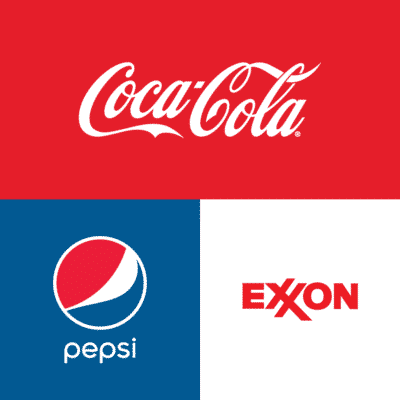
-
Arbitrary trademarks
Unlike fanciful trademarks, arbitrary words exist in the dictionary and still have a recorded use. But it owes its strength to irrelevance.
Think Apple. The apple fruit is an irrelevant symbol and connotation of computers and technologies. Yet Apple Inc. adopted it as their emblem, proving that arbitrary words are strong trademarks.
If an apple pie business decided to use it as an icon, it wouldn’t have the same trademark strength, and it wouldn’t be registrable.
-
Suggestive Trademarks
The meaning is not told outright but rather hides in words. That’s the power of suggestive trademarks.
Think Coppertone for suntan oil. It refers to the bronze color, which is the goal of tanning products. While not as strong as arbitrary and fanciful trademarks, suggestive trademark’s use of allusion sets it apart from other brands.
-
Descriptive Trademark
These are words that merely describe a product or a service. It has no unique value to it; hence it’s a weak trademark and not registrable.
For example, cold and creamy for ice cream, bed & breakfast for lodging services, sun-away for sunscreen, and cool & breezy for air conditioners. Unlike suggestive ones, here, the meaning is obvious; hence it’s less unique.
-
Generic Trademark
Generic trademarks are common words in everyday language; therefore, they are neither a trademark nor federally registrable. For example, Ballpoint pen, Skid-steer loader, Inflated cushioning, Drinking fountain, leather bags, spring foam, etc. This is the weakest in terms of trademark strength and is more likely to be a subject of legal issues.
Would a Trademark Application Be Right for You?
Before deciding whether to trademark your brand, learn about other ways of registering and protecting your work. Ensure the type of registration chosen matches your goal and protects your business.
Alongside trademarking, you may decide to copyright your work or patent it. The trademark protects your logo and brand name used in the goods and services you sell. Copyright protects a creative work which may include artistic pieces. Lastly, the patent gives you the rights to an invention. Notice that all of these are used in different cases.
How is Trademark Different From Copyright and Patent?
What is the difference between trademark, copyright and patent? We disclose the differences below with three broad categories.
1. Definition
Trademark, Copyright, and Patent are all intellectual property rights that aim to protect creations of the mind such as inventions, creative output, and brand image.
However, it’s important to understand that they all differ in what they protect, regulations, licensing applications, and lifespan.
A trademark protects unique words or symbols related to a specific brand identity, such as logos and slogans. On the other hand, copyright protects artistic output such as movies, stories, novels, painting, performance art, sculpture, and music provided that they are recorded in a physical form. Lastly, a patent protects inventions such as chemical composition and machine designs, for example, iPhones and 3d printers.
In other words, a trademark is for brands, copyright is for artists, and a patent is for inventors.
2. Lifespan
These three intellectual property rights also differ in terms of the lifespan of protection. Trademark is the longest, which can last forever as long as the business owner can provide documents proving that the trademark is still used in business.
Copyright protection, on the other hand, is limited to the creators’ lifetime plus 70 years. After that, a copyrighted artistic expression become owned by the state and available for public records.
Once a patent is approved, the law only grants exclusive rights to the inventor for 20 years. After such time, anyone can use the patent without the inventors’ permission.
3. Legal Protection
What does federal protection provide? Several things. Let’s take trademark first. A federally-registered trademark cannot be used in other similar goods and services in business processes except with the trademark owner’s permission.
For example, since Google is trademarked, any search engine and tech-related business cannot use the word “Google” in their branding along with its color palette and font.
As for copyrights, copyright is assumed upon creation. So, for instance, once you publish your poetry, novel, or song, you have the original copyright to its reproduction, republication, and repurposing. No one can use your creative output for public consumption without your permission.
Unlike copyright and trademark, a patent needs to be registered for and be approved by the US Patent and Trademark Office (USPTO).
And as opposed to trademark and copyright registration, patenting is arduous and expensive and should be aided by an experienced patent attorney.
However, once your patent is granted, the law prevents other parties from copying, duplicating, and selling your invention without your consent as the inventor.
Copyright vs. Trademark
What’s the difference between copyright and trademark?
- Copyright is made for protecting the creator’s right.
© is for copyright or ‘Copyright’
- Trademark is made to prevent confusion in the marketplace of the company.
™ for the unregistered trademark
℠ for the unregistered service trademark
® for the registered trademark
But the differences are not as cut and dry as that as we explain below.
Should a Logo Be Copyrighted or Trademarked?
Should I copyright or trademark my logo? Now, this is where it gets confusing.
A logo can be both trademarked and copyrighted. But it will depend on the purpose.
Trademarks are all to prevent confusion. Let’s say you have a trademarked logo for your soap business. A trademark tells two things: other businesses should not use the same logo in their soap products. Another is that you remind consumers that you are the original source of the product and anyone else with similar logos infringes on your trademark rights.
Now, suppose you diversify your soap business into other services such as books, merchandise, etc. You can do two things: either apply for a different trademark under a different class, or you can apply for a copyright of your logo.
For a trademark under a different class, you will need to register your logo per service or product. So, for instance, a soap logo for books, a soap logo for merchandise, soap logos for healthcare products, and so on. Now, this eats up time and money.
On the other hand, if you register your logo as copyright, then copyright laws will consider your logo as a form of art or creative product where the right to use and distribute solely rests on the creator, i.e., you and your permission.
The catch is that it’s difficult to copyright a logo. For a logo to be approved for copyright, it must be highly unique and not generic and involve an artistic formula. Otherwise, a logo is only up for a trademark.
Again, copyright is there to protect the creator’s right, i.e., the owner of the logo or the business owner. The trademark exists to protect the logo in relation to a product or service, i.e., the flat-designed bird on Dove soaps or the apple with a bite design on Apple technologies.
For example, the term Harry Potter is trademarked for books, while the word Starwars is trademarked for merchandise and theme parks. This means no one can use the term for the same products, i.e., books, merchandise, and theme parks.
However, the trademark does not provide rights to the product itself— only to the terms, i.e., Harry Potter and Starwars. That aspect is protected by copyright. Copyright protects the books, merchandise, and theme parks.
Legal Suites Related To Trademark
1. Trademark Infringement
Trademark infringement is the unauthorized use of a trademark that will likely cause confusion about the source of the products and goods.
If another brand uses a registered trademark, consumers will doubt the authenticity of the products. They will ask: Do the products come from our trusted brands, or we’re getting similar-looking packaging from a different company?
This may affect the business that owns the original logo in two ways. First, any substandard quality products associated with their brand incur a terrible reputation. Second, a shady reputation damages the bottom lines.
So when crafting a brand identity, keep in mind competitors’ logos, slogans, product packaging, etc. This keeps lawsuits at bay.
2. Counterfeiting
Whereas trademark infringement uses similar-looking marks that are likely to cause confusion, counterfeiting is the unauthorized act of copying an exact image of a material.
Counterfeiting is different from trade infringement because the former intends to duplicate the product and its designs. For example, fake Louis Vuitton duffle bags and iPhone imitations. A trademark infringement is where one copies just a component of the product, which is primarily logos.
Counterfeiting is against the law. Doing so may result in fines of up to 10,000 dollars and be sentenced for up to three and a half years.
Must-Do’s Before Trademarking
Once you decide on the type and level of trademarking, you should take care of a few more things.
-
Set Things in Stone
Before deciding to trademark your logo, ensure this is the final version of it because if you plan to make changes, you will have to go through the process from the beginning. Invest in a professional logo, or don’t trademark the existing one until you can afford to have a professional logo.
-
Make It Unique
Your logo is what will stick in the minds of customers for a while. Unique professional logos not only differentiate your product or service from the rest but are also memorable. Avoid copying famous brands, and instead, create your own thing. Search logos in your industry to inspire you to create your own unique one.
-
Long-Term Commitment
Is your business a simple side hustle you’re building to simply profit in the short term, or it’s something you plan on doing for several years? Clarify all your doubts before trademarking your logo. If it’s only a short-term commitment, you may not need a trademark.
How To Trademark a Logo
To trademark a logo you must register for a trademark.
Registering for a trademark may be expensive and time-consuming but worth the effort. It affords a myriad of rights and privileges that an unregistered trademark will not.
So here are the steps to file for a trademark under US federal rules:
1. Trademark Research
Before filing for a trademark, you must ensure that no other similar trademarks are registered or pending in the database. Trademark research is vital to avoid any disputes and legal issues arising from other brands’ opposition.
You can visit the United States Patent and Trademark Office’s (USPTO) Trademark Electronic Search System (TESS) for all records regarding trademarks.
Once you’ve been cleared of any possibility of disputes, now is the time to register your trademark.
2. Trademark Filing
When you’re ready to apply, go to the Trademark Electronic Application System (TEAS) of the USPTO and submit the necessary documents with the following information:
-
Information on the owner of the mark
This includes the owner’s name if it’s a person, and the name of the business or corporation, etc., if it’s a juridical entity. Along with the name, you will be asked to provide the mailing address, email address, and other contact information.
-
Choose which Type of Mark
Then you’ll have to choose which type of mark you want to apply for. Is it a standard character mark or a special character format? Is it a trademark or a service mark?
-
Drawing and Specimen
The drawing contains the image or the words you wish to register. On the other hand, a specimen shows not only the image but also the product or the service it is associated with. For example, logo X attached to a blanket, t-shirt, pizza box, etc. In the case of a service: a logo as shown on the website of the services.
-
Product or Service Class
Again, a trademark is only protected in relation to a specific good or service, such as how Harry Potter is trademarked for books and Facebook is trademarked for social media services.
So in registering for a trademark, specify which goods or services. For example, “I’m lovin’ it” for restaurants, “What’s in your wallet” for digital banking, and the Nike swoosh icon for shoes.
-
Fees
Fees will depend on two choices: TEAS plus or TEAS standard. The former has more requirements upfront for the initial application, but you also pay lower fees per class of goods or services. TEAS standard has fewer but more rigid requirements and, as a result, higher fees per goods or services.
For both options, the fees are the following:
- TEAS Plus: Pay $250 per class of goods/services.
- TEAS Standard: Pay $350 per class of goods/services.
Make sure to visit the USPTO website as this data may change.
What Happens After You File For Registration?
Once your submission has been accepted, you will have to wait for the USPTO attorney’s office to process your registration. It will take approximately three months to evaluate your files. And when they find some issues, they will raise them for you to fix and continue the process.
Other brands who will find your pending trademark similar to theirs may contend for your registration. Such a case can lengthen the process for several years.
But suppose you receive no disputes, in other words, the attorney’s office did not find any issues with your trademark, then it will be registered. This can take up to 18 months.
Reason for Trademark Rejection
Knowing that thousands of brands are being created constantly, the chances of you coming up with a similar logo are considerable. To avoid getting rejected while applying for trademark registration, have a look at these common rejection reasons:
- Too generic. Being generic with your logo and the brand name makes it hard for clients to distinguish it, so it won’t be accepted as a trademark.
- Confusing. Your logo resembles another brand and causes confusion to customers.
- Just Pretty. Having a logo that’s simply intricate and ornamental rather than one that represents your brand values.
- Offensive. Including images, symbols, or insulting words.
- Misleading. Having parts of your logo or verbiage mislead the watcher about your brand location.
Logo Trademarking FAQ
No schema found.
Two registration types
Both the company name and the logo protect different parts of your brand. Registering your logo protects the colors, shapes, design, orientation, words, and font from being used by others. Meanwhile, trademarking your company name doesn’t protect any of these, but it prevents others from using it.
Register them both if you can afford it, but your company name is more important if you have to choose. Costs vary from $500 to $1500.
It could change more often
As your business grows, you may want to change your logo for a more professional one. If your previous logo was trademarked, you have to start the process of trademarking all over again.
Presents more value
Your company name possesses more value than the company logo as it is more diverse, and it is always protected. Meanwhile, your logo is protected only in its exact form. Legally speaking, your company name presents more protection.
Using ®
After having your registration application approved, you’re allowed to use the trademark symbol beside your logo or company name. This officially states that your company is trademarked. Before getting approved, you can use the ™ sign to signify you’re in the process of getting your trademark registered.
Need help? Trademark your logo with LegalZoom
To help you with your logo trademarking, consider using a lawyer or trademarking service like LegalZoom to streamline the process.

How to Trademark a Logo – Final Thoughts
Having knowledge about trademarks not only prevents you from receiving legal suits but also helps advise you about whether or not you should sue that business using your trademark.
We learned that trademarks are limited to two aspects: location and class. State registration and federal registration only guarantee rights within the country but outside, different registration and rules apply.
Lastly, you’re only protected as much as your service and product class guarantees. A registered slogan for food products cannot sue a manufacturing business when it uses the same motto.
In short, understanding trademarks and their limitations prevents you from squandering valuable time and money based on wrong legal assumptions.
But the key to really preventing getting legal issues is to build an inimitable identity. Highly unique trademarks are less likely to find copycats and more likely to secure a coveted market share.
Frequently Asked Questions
What is a trademark?
A trademark is the unique mark of a person, business, product, or service that can be legally binding when registered. Trademarks are usually registered to a specific "class," meaning that the same trademark can be used by another business with an unrelated service or product.
Do you copyright or trademark a logo?
Copyrighting pertains to more creative or art-related products, such as television shows, films, or other creative endeavors. While trademarks are typically more limited to products and services and required to fall within a certain class based on usage, logos can be copyrighted or trademarked, based on use.
What are things you cannot trademark?
Anything generic, misleading, offensive, or without brand representation can be rejected as a trademark. Trademark infringement can lead to serious legal repercussions, so we’d suggest you hire a brand designer that understands the requirements thoroughly.
How much does it cost to trademark a logo in the US?
TEAS (Trademark Electronic Application System) handles most trademarking in the US. Under TEAS Plus (which has more paperwork upfront), the charge is $250 per class of goods/services. The charge for TEAS Standard (a filing option that has fewer upfront requirements) is $350 per class of goods/services.
What is a product-related trademark?
Registered trademarks fall under the ‘®’ category and can be backed up legally. Product-related trademarks are typically categorized under ‘™’ and fall under the purview of any item that can be sold or purchased. That said, service-related trademarks or ‘sm’ fall under the service category.
How do you trademark a name or design?
When ready to apply, go to the Trademark Electronic Application System (TEAS) of the USPTO and submit the necessary documentation along with information on the owner, the trademark type, the logo/drawing, its category (product or service), and the registration fees.
Related Logo Posts:
- Best Logo Design Courses
- Logos in a Responsive Design World
- Best Free Logo Makers
- Best Software for Logo Design
- How to Present your Logo Designs to Clients
- The Logo Design Process of Top Designers [Infographic]
- Logo Design Grid Systems Deconstructed [Video Class]
- 2017 Logo Design Trends Forecast
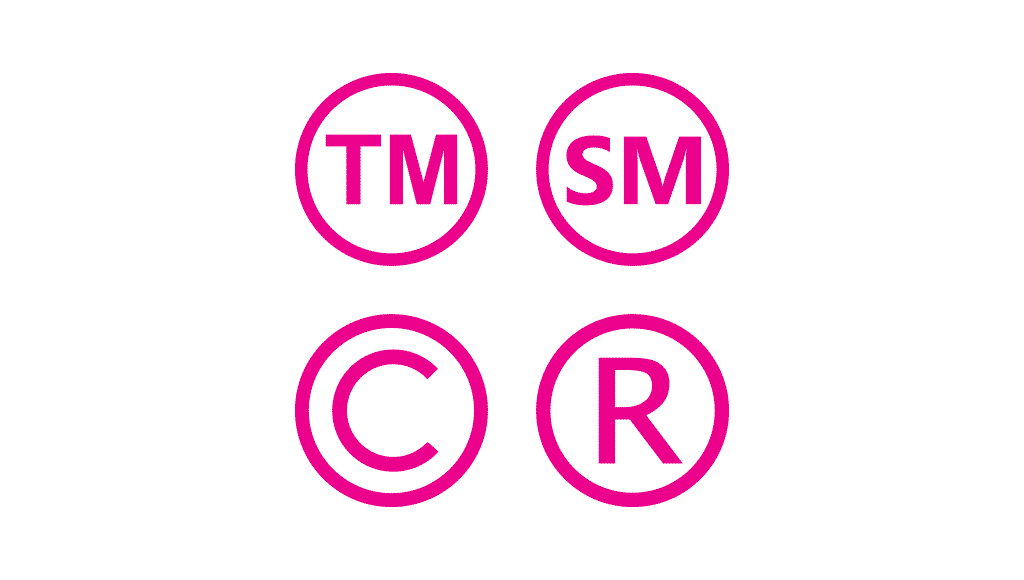








Thank you so much for posting this. I get asked this question all the time, and I’ll just be forwarding this post now. 🙂
Great post! Do you have any tips to find out if the logo/concept is already in use by another company during the design process? Before you present the logo/concepts to the clients?
Andrea,
A good place to start is logo image galleries, tradmarkia, google images, etc. If you see a similar concept, get more creative & come up with something more unique.
Thanks alot for this post, I was just looking into this subject this week. This was a huge concern of mine, thanks again for this resource.
Thanks Jacob! This is great!
What a great thing to have.
great informative and very useful article.I have never read any tutorial on this topic.Thank for sharing this information.
Where do you begin finding a trademark attorney? And how much does that cost on top of the actual cost just for the trademark itself? I might check out legalzoom.com
Kanon,
I am a trademark attorney that works for an Internet-based full service trademark law firm. Give me a call and I can provide you with prices for our registration services.
John
This is hard to find info on the net, thanks just made it crystal clear for me, does any one knows the cost involve in registering logo for trade marks for websites? nation wide. thanks
Hi There,
If you want some information on how to trade mark, I found this site:
http://www.trademarksmadeeasy.com
There are three free reports that give an overview of what you need to do and why.
Hope this helps everyone.
Gary
Erenovations – Legal Zoom will handle the trademark application for you for $169 + gov. fees ($325). Or you can do it yourself for just the $325 @ USPTO.gov
http://www.legalzoom.com/trademarks/trademarks-pricing.html
http://www.uspto.gov/trademarks/basics/index.jsp
I am an artist and recently painted an image for a friend as a gift. She has now informed me that she is going to trademark the image and use it for her business. As the artist do I hold the copyright to all of my paintings and would my friend need a legal letter from me confirming I give her the right to use the image? Should I also charge a fee and what would be an acceptable price to expect?
Jody, you may not feel this way now, but I would take it as a compliment that your friend would want to use it for her business. BUT in a business frame-of-mind, yes I could see it as being somewhat legal issue since your artwork will be reproduced in various manners and I’m assuming when the gift was given, the ability to reproduce your artwork was not part of the deal. In all fairness, a friend should’ve at least asked for your permission to do so as a courtesy to you. That being said, I wouldn’t hassle your friend about the trademark, but for the health of your conscience, I would be up front with your feelings about it and confront them softly about it.
Let her own the rights to her logo. You charge her a fee for the work or let it be given or let her give you some money. Any business, the owner should really own everything or others can make claim. It is only fair.
Thanks for the clear info, Jacob. I am thinking of getting a trademark for a new idea I have. The “trademark watch” sounds interesting. I didn’t know about that.
sooooo…. in short hire an attorney. This was extremely uninformative.
Hi Jacob! Thank you for such great information and I have to say your work is stunning! I have a client who want to Trademark his logo and I have 2 questions.
1. In corporate settings I have added a TM to the logo itself until the legal dept went through the process of getting it registered and using the ®. As a designer the mark really bugs me! It can get too small and lost – it can get too large on big signage and is just in the way. And never mind trying to embroider it. You don’t mention adding the mark itself. Is it necessary? I was always told if you added the mark you were covered and you had to have it to be legally covered.
2. I did a name search before creating the logo and found it was taken. It turns out a former co-worker stole this clients idea and ran with it in Mexico – but it seems like the company is now either not operating or very tiny. All they have is a bad Facebook page. Should I be concerned?
Thanks for the great guide. It’s awesome that you show us how to work through all the bullshit out there.
I’ve got another question though. I’m currently setting up a company based in Turkey (I recently moved here after a life in England) but my plan is to expand and sell pretty much worldwide.
My base of operations (MacBook and me) are based in Turkey, and production and distribution are likely to be in North America and later perhaps in other areas where labor is ethical and fairly priced.
What’s the best way to deal with a difficulty that comes from something like this? Do I need to register my logo, word mark, slogan and designs in each individual country or is there an umbrella organisation that covers every major country?
I’d be totally stoked to get your advice.
Good vibes
🙂
Ray
thanks for this great article.
is their any way of knowing that a logo created by me for my company is used by the other company or not?
thanks for this great article.
is their any way of knowing that a logo created by me for my company is used by the other company or not please help me?
If you redesign your existing registered trademark do you need to re-trademark it or update the information with the USPTO?
Great post !!I found one more article regarding trademark registration process.I hope it will be useful.
http://vakilsearch.com/trademark-registration-process
When we heard this ” inner peace”, some positiveness comes automatically. In this busy and hectic life most of us are not happy; but we all wanted to be happy. So the question arises in our mind automatically; how to be happy. Is there any tool or machinary or government sceheme. The answer is NO. But let me tell you a screat, there is always a person who can make you happy and that special person ( or say great person) is YOU
for more click here
http://eduntecho.blogspot.in/2015/07/inner-peace.html
Recently sold my art as a logo-gave the client a one time use form and she paid me $100 for it. The form states I will not resell the image as a logo design to competing businesses and not will she resell it or use it for another type business. I state my name will appear in the image as @xxxxxxx and as my intellectual property can make prints and sell them in my studio. Her atty isn’t liking this contract and says for her to trademark my design as her biz logo I csn not use my original in any capacity. I sent her an image via computer for her use and I still have the original. Any advice is appreciated. Would have charged a lot more than $100 if I knew her intention.
This was the most vague and absolutely pointless article ever written. The 3 steps are so broad it’s laughable.
I registered a startup company in Bangalore and got the TM done at a very cost effective manner, if you are cash strapped then you might want to check them out, they only charge around $12 as professional fee.
http://www.mycounsel.in/get-a-trademark-in-30-mins.html
Nice Post.. Valuable and interesting information is here. I like to share website for Trademark Registration it would be helpful for you all..
http://www.myefilings.com
this article was very informative, but i got my trademark registration through http://www.legalraasta,com. They provide quick and affordable services.
Very Nice Blog About Trademark. here is one more interesting one about trademark.